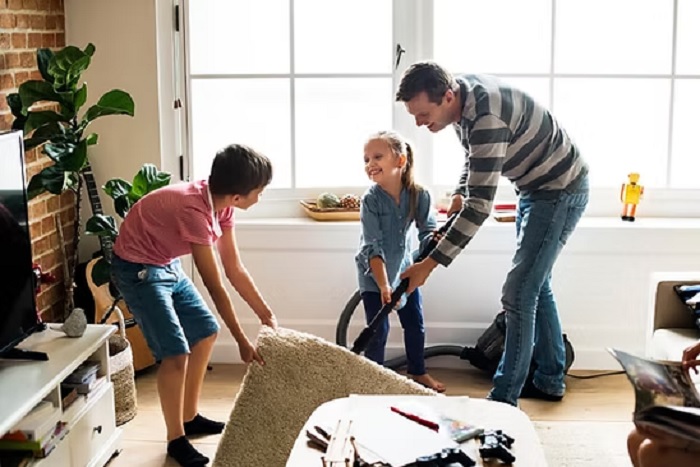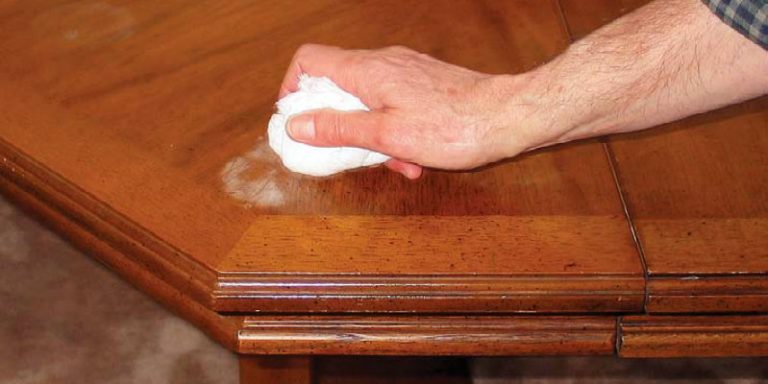
In today’s fast-paced world, maintaining a tidy and organized home can often feel like a daunting task. With the daily influx of items, papers, and possessions, the idea of decluttering might seem overwhelming, especially for those just starting on their journey to a cleaner, more organized home. However, decluttering is not just about getting rid of things—it’s about creating a space that feels peaceful, functional, and inspiring. Whether you’re tackling a messy closet, an overflowing garage, or a cluttered living room, this beginner’s guide to decluttering in cleaning and maintenance will provide you with the tools, tips, and strategies needed to transform your living space into a sanctuary of calm and order.
Step 1: Understand the Importance of Decluttering
Before diving into the practical steps of decluttering, it’s important to understand why it matters. A cluttered home can have a significant impact on your mental health, productivity, and overall sense of well-being. Research has shown that clutter can contribute to stress and anxiety, making it harder to focus and relax. On the flip side, a well-organized space can foster feelings of accomplishment, calmness, and clarity.
Decluttering also plays a key role in cleaning and maintenance. Excessive items can make it more difficult to clean effectively, as clutter tends to gather dust, dirt, and debris. By decluttering, you’re not only creating a more functional environment, but you’re also simplifying the cleaning process, allowing for better airflow, easier access to surfaces, and a more hygienic space overall.
Step 2: Set Clear Goals and Priorities
Decluttering can feel like an insurmountable task, especially if you’ve accumulated items over many years. To avoid feeling overwhelmed, it’s essential to set clear, achievable goals. Start by identifying the areas of your home that need the most attention. Do you have a chaotic kitchen counter, a jam-packed closet, or a cluttered bathroom? Prioritize spaces that impact your daily routine the most.
Breaking down the decluttering process into smaller tasks will help keep you motivated and focused. You don’t need to tackle everything in one go. Instead, approach your home room by room or even section by section. For example, you might choose to declutter just one drawer or a single shelf on a given day. This step-by-step approach will prevent you from feeling overwhelmed and make the process feel more manageable.
Step 3: Use the “Four-Box” Method
One of the most effective decluttering techniques for beginners is the “Four-Box” method. This strategy involves labeling four boxes or bins as follows:
-
Keep: Items you use regularly or that hold sentimental value.
-
Donate: Items in good condition that you no longer need but could be beneficial to someone else.
-
Sell: Items that have value and could be sold for a profit.
-
Trash: Broken, outdated, or unusable items that cannot be repaired or repurposed.
As you go through each area, place every item into one of these categories. Be ruthless but thoughtful. Ask yourself questions like, “Have I used this in the past year?” or “Does this item add value to my life?” If the answer is no, it likely belongs in the “donate” or “trash” pile. This method not only helps you decide what to keep, but it also ensures that unwanted items are disposed of responsibly.
Step 4: Start with the Easy Wins
For many beginners, the hardest part of decluttering is simply getting started. To build momentum and avoid feelings of frustration, it’s helpful to begin with easy wins—areas that are relatively simple to declutter. This could be a drawer full of mismatched items, a coffee table that collects clutter, or a bathroom counter scattered with unused products. These spaces typically take less time to sort through, and the immediate improvement will provide a sense of accomplishment.
Starting small also allows you to practice the decluttering process without becoming overwhelmed. It’s important to build confidence by tackling areas that are less emotionally charged, so when you move on to more difficult spaces, you’ll feel more prepared.
Step 5: Create Sorting Systems
As you work through your home, it’s essential to establish sorting systems that work for your lifestyle and space. Simply decluttering is only part of the equation—effective maintenance relies on staying organized after the decluttering process is complete. For example, use storage bins, baskets, and drawer organizers to keep your items in order. Label boxes or shelves to make it easier to locate what you need without creating new clutter.
In your closet, consider a system where you keep only the clothes you wear frequently and donate or store seasonal items. For books and papers, invest in a filing system that allows you to quickly access important documents while keeping your workspace tidy.
When it comes to maintaining an organized space, consistency is key. Make a habit of regularly reassessing your possessions and ensuring that everything has its designated place. Remember, decluttering is an ongoing process, not a one-time event.
Step 6: Tackle Sentimental Items Mindfully
Sentimental items are often the most difficult to declutter. These are the objects that hold emotional value, whether they’re old photographs, gifts from loved ones, or items connected to cherished memories. While it’s natural to feel attached to these belongings, it’s important to approach them with mindfulness.
Start by selecting a small collection of sentimental items that truly hold significance. Take time to appreciate each item and decide whether it still adds value to your life. For example, you might have a box of childhood memorabilia—ask yourself if every single item is truly necessary, or if you can downsize the collection while still preserving the memories.
One helpful tip is to take photos of items you can part with. This allows you to preserve the memory without physically holding onto every single item. You could also create a scrapbook or memory box to keep the most meaningful pieces organized and accessible, while letting go of the rest.
Step 7: Implement Daily Maintenance Habits
Once you’ve successfully decluttered your home, it’s important to establish daily habits that prevent clutter from creeping back in. Spend a few minutes each day putting things back in their designated places, wiping down surfaces, and tidying up areas that tend to accumulate clutter. These small daily habits will help you stay on top of your space and avoid the buildup of unnecessary items.
Consider setting a timer for a “10-minute tidy” session at the end of each day. This brief commitment will help maintain order and keep your home consistently organized. Additionally, make a habit of decluttering regularly—whether it’s once a week or once a month—so you never have to face a major cleanup session again.
Step 8: Get Creative with Storage Solutions
Maximizing storage space can greatly contribute to maintaining an organized home. Look for areas in your home where you can introduce creative storage solutions, such as under-bed storage, vertical shelving, or multi-purpose furniture like ottomans with hidden compartments. Small organizational tools like drawer dividers, closet organizers, and stackable bins can also help you keep items neatly sorted and easy to access.
When you store items, always make sure they’re easily accessible. The key to effective storage is not just putting things away, but making sure that everything has a place and can be retrieved without hassle.
Conclusion
Decluttering is an essential part of home cleaning and maintenance, and while it may initially feel overwhelming, breaking it down into manageable steps can make the process both achievable and rewarding. By understanding the importance of decluttering, setting clear goals, using effective methods like the “Four-Box” approach, and developing sustainable organizational habits, you can transform your home into a peaceful, functional space. Decluttering not only helps improve the aesthetic and cleanliness of your home but also contributes to your mental and emotional well-being. With patience, commitment, and consistent effort, you’ll be well on your way to mastering the art of decluttering—and creating a space that truly feels like home.
You May Also Like
How to Improve Your Home wit ...
03 April 2025
How to Improve Your Stain Re ...
07 February 2025
How to Improve Your Home wit ...
10 December 2024
Popular Post
Expert Insights on Installing Solar Power Systems
28 October 2025Local Plumbing Expertise You Can Trust in Killeen
22 August 2025Innovative Solutions for Refurbishing Commercial Spaces
14 August 2025How to Improve Your Home with Valuation and Agents
30 April 2025Recent Posts
- Expert Insights on Installing Solar Power Systems October 28, 2025
- Local Plumbing Expertise You Can Trust in Killeen August 22, 2025
- Innovative Solutions for Refurbishing Commercial Spaces August 14, 2025
- How to Improve Your Home with Valuation and Agents April 30, 2025
- The Beginner’s Guide to Design in Home Improvement April 24, 2025
- How to Improve Your Home with Maintenance and Repair April 16, 2025
- Why Your Roofing Strategy Needs a Flat Roof April 10, 2025
Archives
- October 2025 (1)
- August 2025 (2)
- April 2025 (10)
- March 2025 (2)
- February 2025 (7)
- January 2025 (8)
- December 2024 (6)
- November 2024 (6)
- October 2024 (6)
- September 2024 (5)
Categories
- Cleaning & Maintenance (5)
- Gardening & Outdoor (5)
- Home Decor (5)
- Home Improvement (5)
- HVAC (5)
- Moving (5)
- Plumbing (6)
- Real Estate & Property (5)
- Roofing (6)
- Smart Home (6)





